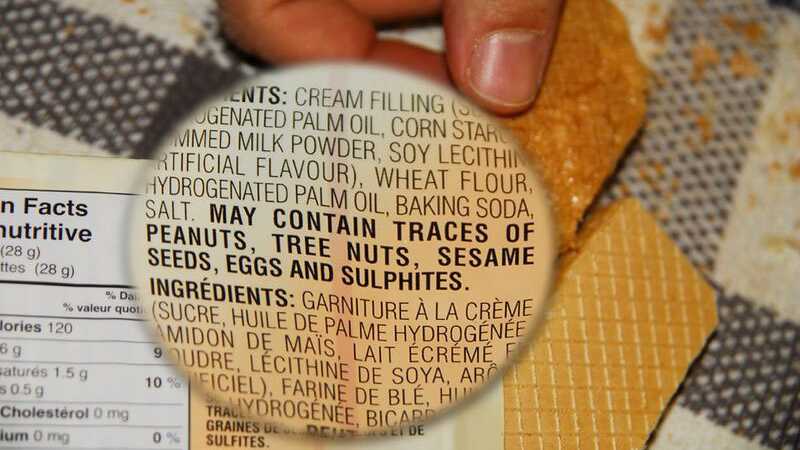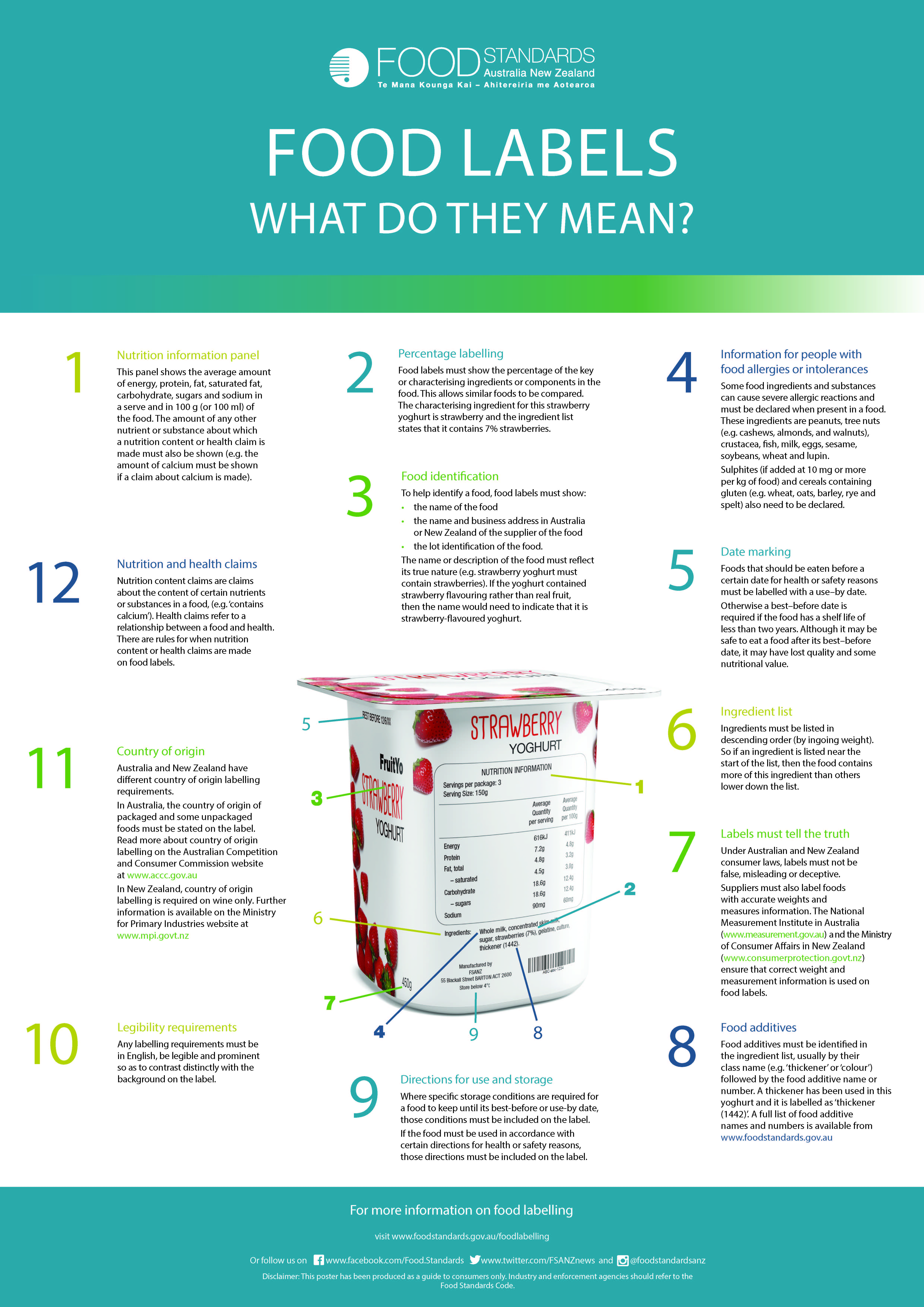38 understanding food labels uk
Understanding Food Labels Understanding Food Labels The label may also provide information about the type of fat. There are 3 main types listed: saturates, polyunsaturates and monounsaturates. Saturated is the type of fat associated with an increased risk of heart disease and other circulation problems. Low-fat biscuits, cakes and desserts are often high in sugar. Food labelling - what you need to know | Health | Bupa UK Food labelling laws mean that food manufacturers and retailers are legally obliged to put the following information on their labels. A list of ingredients, starting off with the one that the product contains the most of. The weight or volume of the product. The name of the food - including a description for brand names.
Understanding Food Labels Guide | World Cancer Research Fund UK Our simple A5 guide makes it easy to understand nutrition labels on food and drink packaging. It also includes a handy credit card-sized mini-guide for you to use while out shopping. Our guide explains the terms used on food labels including serving size, nutrients, reference intakes and traffic light labels.
Understanding food labels uk
Labelling | Food Standards Agency Nutrition labelling It is mandatory for nutrition information to be declared on prepacked food. In Northern Ireland, the FSA is responsible for nutrition labelling. District Councils enforce these... Food labelling and packaging: Overview - GOV.UK To sell food and drink products, the label must be: clear and easy to read permanent easy to understand easily visible not misleading You must show certain basic information and list the... PDF Food and drink labelling - Food label they need to adapt to the new food labels and use them with confidence'. 1. The regulation's full name is the 'EU Regulation 1169/2011 on the provision of food information to consumers' Labels on pre-packaged food and drinks have changed due to a new European Regulation1. This new piece of legislation is designed to make food labelling ...
Understanding food labels uk. UK Healthy Eating Seminars - Natural Alternative Informative, fun and interactive, our nutrition seminars can be delivered across the UK. Help your employees to a healthier lifestyle, call 0844 870 0741. Home; Services. Webinars; ... Understanding food labels. Learning Outcomes. In this webinar we explain how to interpret food labels allowing you to choose the right food to optimise your ... Food labelling - get into the habit of checking the label Look for five key points on the label: 1. Energy The terms 'kJ' and 'kcal' (calories) tell you how much energy is in a product. Women need an average of 2,000 kcal a day and men need 2,500 kcal on average. 2. Saturates Saturates is another word for saturated fat. This section tells you about the amount of saturated fat in the product. 3. Salt 10 tips for understanding food labels - Heart Matters magazine Here are 10 easy tips to help you read back-of-packet labelling: 1. Read the ingredients list Most pre-packaged foods have an ingredients list on the back of the packet. Everything that goes into your food will be listed in weight order from biggest to the smallest. Food labels - NHS Most pre-packed foods have a nutrition label on the back or side of the packaging. These labels include information on energy in kilojoules (kJ) and kilocalories (kcal), usually referred to as calories. They also include information on fat, saturates (saturated fat), carbohydrate, sugars, protein and salt.
Understanding UK food labels - Weightplan.com Understanding food labels is really important when you are choosing pre-packaged foods, or drinks. Reading the labels means that you can make a better informed choice about the foods you are buying. This will help you to decide if the produce is a 'healthier choice'. Check out the ingredients lists This will tell you the main ingredients. Understanding food labelling in Great Britain 2003-2017 - Statista Bord Bia, Share of British consumers agreeing with the statement "I often find it difficult to understand the labelling on food" in Great Britain from 2003 to 2017 Statista, ... Understanding Food Labels - YouTube In a tizz about food labels? Let Sophie and Paul explain how to decipher common food labelling to help you make healthier choices! Understanding food labels - Livewell It's important to understand energy values on food labels. Many products will list the calories on the front of the pack, along with further key information such as fat (and saturated fat), sugar, and salt. Food labels will almost always display energy values in kilojoules ("KJ") and kilocalories ("kcal", usually referred to as "calories").
How to Understand food labels - Practical tips and advice Food Label Decoder Ingredients lists Most pre-packaged foods have an ingredients list on the back of the packet. Everything that goes into your food will be listed in weight order from biggest to the smallest. Hence, if the first products on the list are sugars or butter etc then these make up the largest proportion of the product. Understanding food labels | Diabetes UK The labels show how many calories are in the food or drink and are also colour coded to show whether the food is low (green), medium (amber) or high (red) in fat, saturated fat, sugar and salt. The information on the front of the pack also tells you how the portion of the food contributes to the Reference Intake (RI) of an adult. Understanding Food Labels | Ignite | Brother UK Currently labels typically include use-by date, origin of product, allergens, quantity, barcode, name of food, ingredients, nutritional value, name and address of the manufacturer, packer or seller, storage conditions and, if relevant, cooking instructions. Food label issues Understanding food labels | nidirect Understanding food labels Most pre-packed foods have a nutrition label on the back or side of the packaging. They can help you choose between products, and keep a check on the amount of foods high...
PDF Understanding of Food Labelling Terms Understanding of Food Labelling Terms Used to Indicate the Absence or Reduction of Lactose, Milk or Dairy 7 their understanding was also hindered by a lack of clarity about the meaning of the...
PDF Understanding and using food labels - FDF Scotland Understanding Food Labels -Food Standards Scotland's consumer guidance Guidance on how to create a front of pack nutrition label, including how the colour code is defined Nutrition and Health Claims Regulations -the legislation which sets out when a claim can be made The list of authorised nutrition and health claims can
Understanding UK food labels - Gym Training Understanding UK food labels: Understanding food labels is really important when you are choosing pre-packaged foods, or drinks. Reading the labels means that you can make a better informed choice about the foods you are buying. This will help you to decide if the produce is a 'healthier choice'.
Understanding food labels - Blood Pressure UK The label will tell you how much energy (in kilocalories and kilojoules), fat, saturated fat (often written as saturates), carbohydrate, sugars, protein and salt is in the food. The amounts will be given per 100g or 100ml of the product, and sometimes by portion as well, so you can work out how much you're eating.
How to read a nutrition label - The Food Medic Salt: 0.3g or less is low (green) , 0.4 - 1.5g is medium (amber), more than 1.5g is high (red) It can also be useful to look at the fibre content on the label. A food is a 'source of fibre' if it contains at least 3g of fibre per 100g and 'high-fibre' if it contains 6g of fibre or more per 100g (2, 3).




Post a Comment for "38 understanding food labels uk"